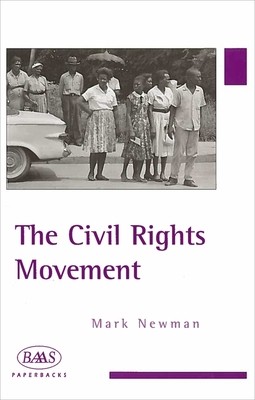
- We will send in 10–14 business days.
- Author: Mark Newman
- Publisher: Edinburgh University Press
- ISBN-10: 0748615938
- ISBN-13: 9780748615933
- Format: 13.7 x 21.3 x 1.3 cm, minkšti viršeliai
- Language: English
- SAVE -10% with code: EXTRA
Reviews
Description
This introduction to the Civil Rights Movement synthesises its history, explaining its origins, development and results as well as historiographical debates. A survey based on a wealth of recent scholarship, it provides a critical perspective on the movement, eschewing the celebratory tone that pervades much of the current literature, and taking into account the African-American community's diversity.Mark Newman outlines the range of white responses to the movement and analyses both northern and southern opinion. He examines the role of the federal government, the church and organised labour, as well as assessing the impact of the Cold War. The book discusses local, regional, and national civil rights campaigns; the utility of non-violent direct action; and the resurgence of black nationalism. And it explains the development, achievements and disintegration of the national civil rights coalition, the role of Martin Luther King Jr and the contribution of many otherwise ordinary men and women to the movement.The insufficiently appreciated National Association for the Advancement of Colored People receives particular attention, with contrasts drawn between the national office and state conferences and local branches. In detailing and assessing the African-American struggle between the 1930s and 1980s, Newman widens the movement's traditional chronology, offering readers a broad-ranging history.Key Features*Covers both the north and south of America*Broad chronological coverage - begins in 1941 and ends in 1989, covering the origins and long-term effects of the movement*Discusses the historiography of the CRM, at an appropriate level for undergraduates
EXTRA 10 % discount with code: EXTRA
The promotion ends in 23d.13:41:21
The discount code is valid when purchasing from 10 €. Discounts do not stack.
- Author: Mark Newman
- Publisher: Edinburgh University Press
- ISBN-10: 0748615938
- ISBN-13: 9780748615933
- Format: 13.7 x 21.3 x 1.3 cm, minkšti viršeliai
- Language: English English
This introduction to the Civil Rights Movement synthesises its history, explaining its origins, development and results as well as historiographical debates. A survey based on a wealth of recent scholarship, it provides a critical perspective on the movement, eschewing the celebratory tone that pervades much of the current literature, and taking into account the African-American community's diversity.Mark Newman outlines the range of white responses to the movement and analyses both northern and southern opinion. He examines the role of the federal government, the church and organised labour, as well as assessing the impact of the Cold War. The book discusses local, regional, and national civil rights campaigns; the utility of non-violent direct action; and the resurgence of black nationalism. And it explains the development, achievements and disintegration of the national civil rights coalition, the role of Martin Luther King Jr and the contribution of many otherwise ordinary men and women to the movement.The insufficiently appreciated National Association for the Advancement of Colored People receives particular attention, with contrasts drawn between the national office and state conferences and local branches. In detailing and assessing the African-American struggle between the 1930s and 1980s, Newman widens the movement's traditional chronology, offering readers a broad-ranging history.Key Features*Covers both the north and south of America*Broad chronological coverage - begins in 1941 and ends in 1989, covering the origins and long-term effects of the movement*Discusses the historiography of the CRM, at an appropriate level for undergraduates


Reviews